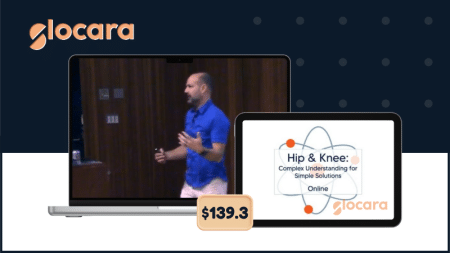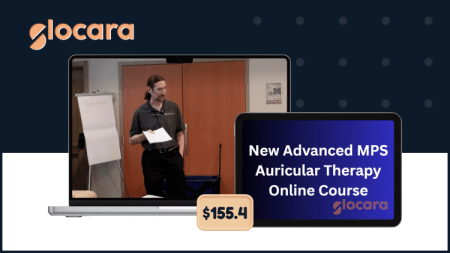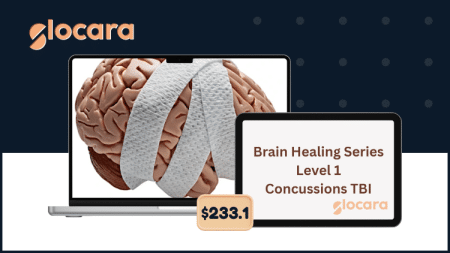MPS Pelvic Health – Level 1 by MPS Courses – Instant Download!
Pelvic floor dysfunction rarely lives in one tissue. Stress patterns, guarded breathing, and old scars often keep the nervous system on high alert—and when the autonomic nervous system (ANS) is dysregulated, manual skills alone may not hold. MPS Pelvic Health Level 1 reframes pelvic care through a heart‑based, ANS‑first lens so you can calm the system, reduce protective tone, and make your hands‑on work go further.
This foundational training from MPS Courses integrates Dolphin Microcurrent Therapy, vagus‑nerve‑supportive techniques, and targeted scar protocols into a clean, repeatable framework. You’ll learn why heart‑rate variability and down‑regulation matter in pelvic rehab, how stress amplifies pain and urgency, and where to start when presentations are complex. Then you’ll apply that understanding through standardized treatment flows for the sacrum, paraspinals, hips, and psoas—along with key pelvic points—to support better comfort, coordination, and confidence.
Format: Digital program, approx. 3.91 GB of video modules and demos.
Investment: $193.90 (one‑time).
Access: Stream or download; learn at your pace from clinic or home.
Scope reminder: Educational training—not a substitute for individualized medical care. Follow device guidance and local regulations.
Free Download the MPS Pelvic Health – Level 1 by MPS Courses – Includes Verified Content:
MPS Pelvic Health – Level 1 by MPS Courses – Free Download Video Sample:
Why it matters
Pelvic health is as much about state as it is about structure. Patients arrive with myofascial restrictions, yes—but also with an ANS primed for protection by chronic stress, past procedures, and persistent pain loops. Treating only muscles and joints can help in the short term; however, without addressing the nervous‑system drivers, symptoms often return.
Level 1 equips you to work upstream. You’ll combine microcurrent‑based neuromodulation, vagal‑supportive approaches, and respectful scar work with the manual techniques you already use. The result is a calmer system, improved tissue glide, more coordinated pelvic floor activation/relaxation—and care plans patients can sustain between visits. For the clinician, that translates into clear decision trees, consistent documentation, and confidence treating common presentations without reinventing your session each time.
Benefits
- Build an ANS‑first framework so down‑regulation becomes the foundation of every visit.
- Reduce protective tone by pairing microcurrent with graded manual release and breath cues.
- Address scar‑related restriction (e.g., C‑section, episiotomy) with trauma‑informed protocols and communication.
- Use reproducible flows (sacrum → paraspinals → hips → psoas → pelvic points) that simplify complex cases.
- Support bladder, bowel, and sexual function by improving coordination—not just strength.
- Offer home strategies (gentle vagal routines, breathwork, and scar care) to extend results.
- Document what matters with symptom scaling, function goals, and tolerance markers.
- Differentiate your practice with a holistic, science‑informed approach patients can feel.
Clinical disclaimer: This course is for professional education. It does not diagnose, treat, or claim to cure disease. Always practice within licensure and device instructions; screen and refer as indicated.
What you’ll learn
- What causes pelvic floor dysfunction? A big‑picture view of how stress, central/peripheral sensitization, posture, and scar patterns interplay.
- Brain vs. heart‑based therapy: Why an ANS‑centered, heart‑rate‑variability‑supportive approach can improve tolerance and outcomes.
- Pelvic floor anatomy & musculature: Practical review with an eye toward tone patterns and referral zones.
- Stress as the root driver: How sympathetic dominance amplifies pain, urgency, and guarding—and what to do first.
- Vagus nerve to the rescue: External, non‑invasive strategies that support down‑regulation before deeper work.
- Common therapies & the vagus nerve: Where your existing skills pair naturally with vagal‑supportive cues.
- Dolphin Microcurrent basics: Parameters, safety, and session flow for reducing stress and improving tissue response.
- MPS pelvic floor pillars: The sequence logic that improves reproducibility and progress tracking.
- Key pelvic floor points: Selection rationale (dermatomes, radiculopathy, neuromyofascial patterns) for typical complaints.
- Scar release essentials: How and why scars activate stress; protocols for C‑section and other pelvic‑influencing scars.
- Home‑care design: Simple routines patients can perform safely to reinforce clinic gains.
MPS Pelvic Health – Level 1 by MPS Courses – Watch Content Proof here:
Key features / modules
Module 1 — Foundations & The ANS Lens
- What causes pelvic floor dysfunction?
- Brain vs. Heart‑Based Therapy
- Pelvic Floor Anatomy & Musculature
- Stress: The Root Cause of Pelvic Dysfunction
- Why Stress Is So Disruptive
- Vagus Nerve to the Rescue
- Common Therapies & The Vagus Nerve
- Reducing Stress for Pelvic Dysfunctions
Impact: Recognize when sympathetic dominance is driving symptoms and apply a calming sequence before deeper tissue work.
Module 2 — Microcurrent & the Parasympathetic Shift
- Dolphin Microcurrent Reduces Stress (education on intent and parameters)
- MPS Pelvic Floor Pillars
- Reducing Stress: Parasympathetic
- Key Pelvic Floor Points
- Radiculopathy, Dermatomes & Pain
Impact: Use Dolphin‑guided sequences to influence autonomic balance and tone, while mapping points to dermatomal referral.
Module 3 — Chapter 1: Sacrum, Dermatomes & Pelvic Floor (Standard Protocols)
- Standard Protocol: Overview
- Standard Protocol: Sacrum
- Standard Protocol: Paraspinals
- Standard Protocol: Hips
- Standard Protocol: Psoas
- LAB: Standard Protocol Summary
Impact: Follow a sacrum → paraspinals → hips → psoas flow to normalize tone and prepare for targeted pelvic work; document tolerance and changes.
Module 4 — Chapter 2: Scar Tissue & Pelvic Floor
- Scar Tissue and Pelvic Floor
- Scars Activate Stress
- How MPS Scar Release Works
- C‑Section Scar Release
- Releasing Fascia After Scars
- Electrically Reconnecting Scars
- Scar Release Overview
- Key Scars That Influence Pelvic Health
Impact: Address skin/fascial restrictions and autonomic “alarm” carried by scars using graded, consent‑led protocols and clear home guidance.
Module 5 — Pulling It Together
- Summary: MPS Pelvic Pain Protocol
- Case reasoning, safety screens, red flags, and referral indicators.
- Documentation and patient education scripts; pacing and progression.
Impact: Convert concepts into a repeatable plan tailored to the individual, with measurable goals and at‑home reinforcement.
Who it’s for
- Pelvic Health Physical Therapists & Occupational Therapists who want ANS‑aware strategies that enhance internal/external techniques.
- Women’s & Men’s Health Clinicians seeking reproducible flows for pain, urgency, dyspareunia, and stress‑linked presentations.
- Bodyworkers & Manual Therapists (within scope) interested in adding microcurrent and scar care to complement hands‑on work.
- New‑to‑pelvic providers who want a clear starting map and language for patient education.
Eligibility: Open to therapists and healthcare professionals; always follow licensure, supervision, and local regulations.
How to use this course in clinic
- Begin with safety & state. Screen and set a baseline; apply a quick vagal‑supportive routine to down‑shift before deeper work.
- Run the standard protocol. Follow sacrum → paraspinals → hips → psoas to normalize tone and prep tissues.
- Target key points. Layer pelvic floor points based on symptom map and dermatomal clues.
- Address scars respectfully. Use graded protocols, consent scripts, and patient‑led pacing.
- Close with a reset. End sessions with a short parasympathetic sequence and home guidance so gains hold.
- Measure what matters. Track pain, urgency, leakage episodes, tolerance to activity, and self‑efficacy—not just strength.
Give your patients a calmer, clearer path to pelvic health—starting from the system that drives it.
Enroll in MPS Pelvic Health Level 1 by MPS Courses — $193.90, digital access (≈ 3.91 GB).
Learn the ANS‑first framework, microcurrent basics, and scar‑aware protocols you can put to work on your very next shift.
- Enroll now to unlock the full module library and demos.
- Follow the standard flows to simplify complex cases and improve consistency.
- Extend results at home with patient‑friendly routines that keep momentum between visits.
Your hands are powerful. This framework helps the nervous system say “yes” to them.











Reviews
There are no reviews yet.